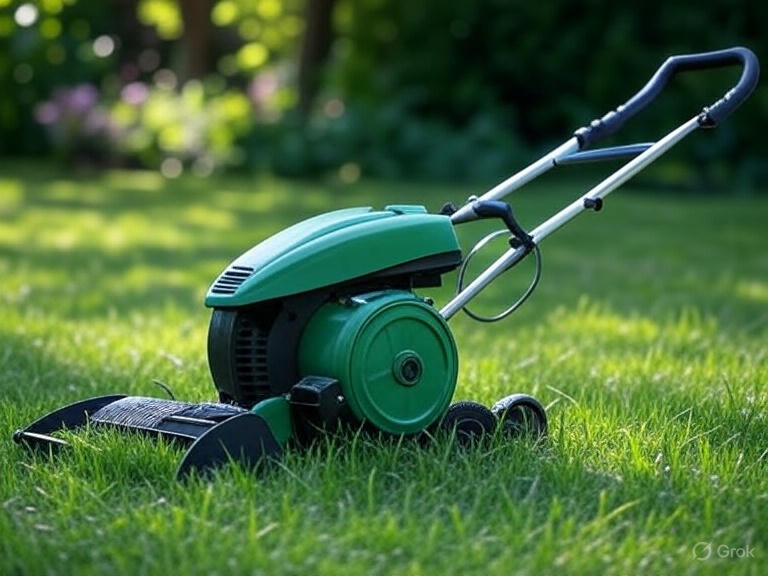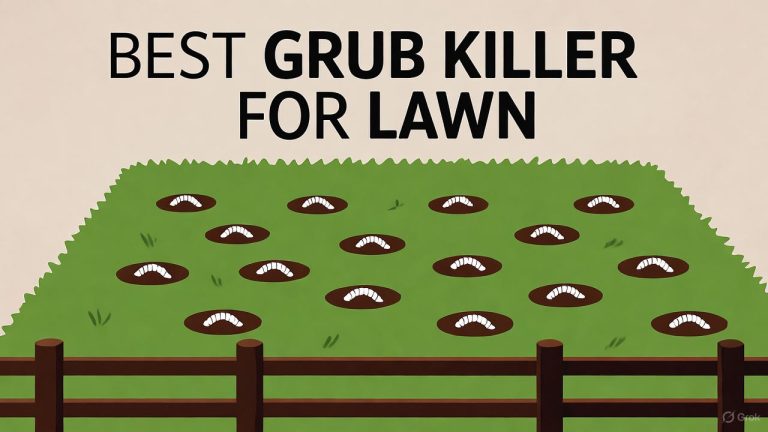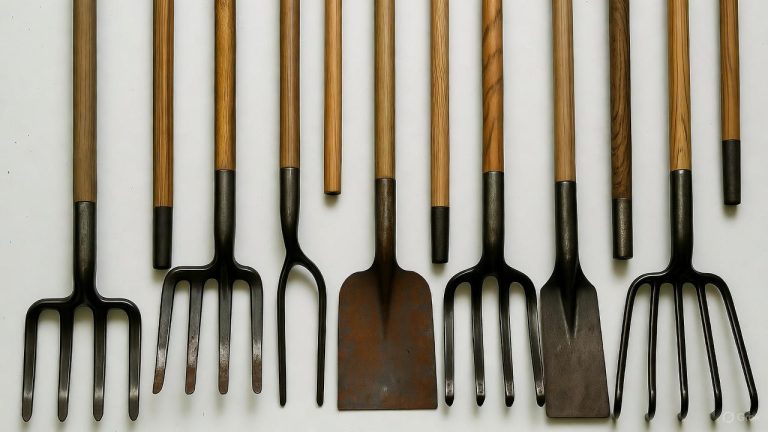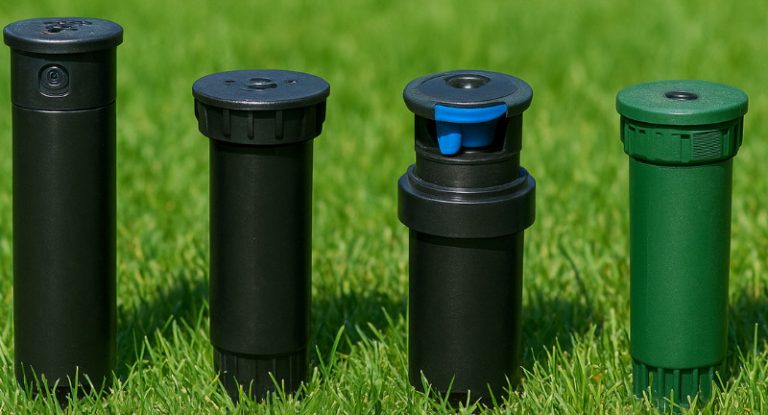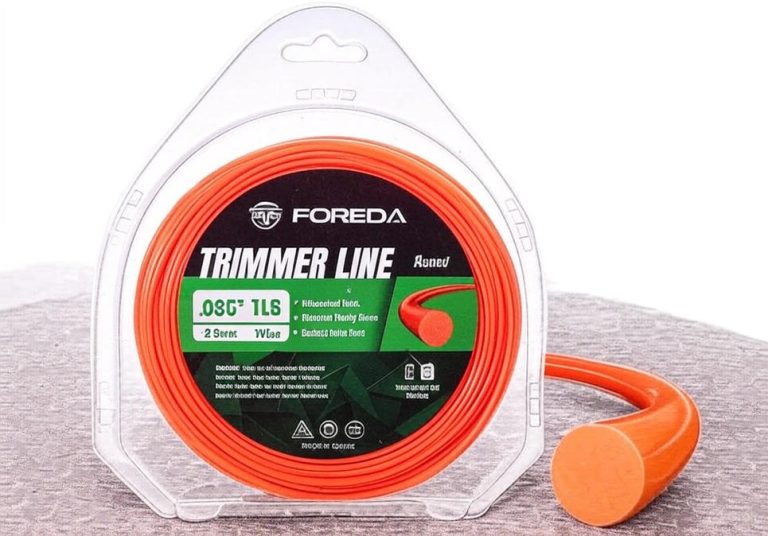5 Best 2-Stroke Weed Eaters In 2025
Maintaining a pristine lawn requires reliable outdoor power equipment, and 2-stroke weed eaters stand out as the workhorses of yard maintenance. These gas-powered string trimmers deliver exceptional cutting power while remaining lightweight and maneuverable. After extensive testing and research, we’ve compiled this comprehensive review of five top-performing 2-stroke weed eaters that excel in different categories.
The 2-stroke engine technology offers distinct advantages over its 4-stroke counterparts. These engines generate more power per pound, start easier in cold conditions, and require less maintenance. Their simple design makes them ideal for homeowners and professionals who need dependable cutting performance without complicated upkeep routines.
Our testing focused on key performance metrics including engine power, ease of starting, cutting efficiency, vibration levels, and overall durability. Each model underwent rigorous evaluation across various grass types and terrain conditions to provide you with accurate, real-world insights.
Quick Comparison Overview
Before diving into detailed reviews, here’s a snapshot of our top picks:
Best Overall Multi-Tool: 52cc 2-Stroke 3-in-1 Gas Brush Cutter Most Reliable Brand: Husqvarna 122LK Grass Trimmer
Best Curved Design: Husqvarna 122C Gas String Trimmer Most Versatile: 5-in-1 Weed Wacker Gas Powered (RL1739 Pro) Most Powerful: COOCHEER 58CC 2-Stroke Weed Eater
Detailed Product Reviews
1. 52cc 2-Stroke Weed Eater Gas Powered, 3-in-1 Gas Brush Cutter
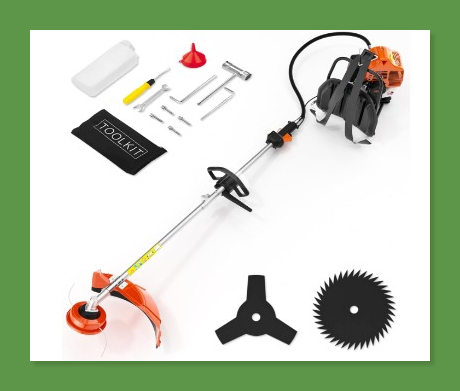
This versatile trimmer combines three essential yard tools into one comprehensive package. The 52cc 2-stroke engine provides robust power for tackling thick weeds, dense grass, and stubborn brush that would overwhelm smaller trimmers.
Engine Performance The 52cc engine delivers impressive torque and maintains consistent power throughout extended use sessions. Cold starts are remarkably easy thanks to the primer bulb and choke system. The engine runs smoothly at idle and responds quickly to throttle input, making precise trimming around delicate plants straightforward.
Versatility Features The 3-in-1 design includes a string trimmer head, brush cutting blade, and edging capability. Switching between attachments takes less than two minutes without requiring additional tools. The brush cutting blade handles woody stems up to 1 inch diameter with ease, while the string head excels at grass trimming and detail work.
Build Quality and Design The straight shaft design reduces fatigue during extended use sessions. Ergonomic handles provide comfortable grip positions for users of varying heights. The throttle trigger feels responsive and includes a lock mechanism for continuous operation. Anti-vibration mounts significantly reduce hand and arm fatigue compared to unbalanced competitors.
Fuel Efficiency The 2-stroke engine sips fuel conservatively while delivering strong performance. A full tank provides approximately 45-50 minutes of continuous operation under normal conditions. The transparent fuel tank allows easy monitoring of fuel levels during use.
Pros:
- Powerful 52cc engine handles tough cutting tasks
- Three tools in one package saves storage space
- Quick attachment changes without tools
- Excellent fuel efficiency
- Strong anti-vibration system
Cons:
- Heavier than smaller displacement models
- Requires 2-stroke oil mixing
- Can be overwhelming for light trimming tasks
2. Husqvarna 122LK Grass Trimmer, 22-cc 2-Cycle, 17-inch Straight Shaft

Husqvarna’s reputation for quality outdoor power equipment shines through in the 122LK model. This straight-shaft trimmer balances power with maneuverability, making it perfect for homeowners with medium to large properties.
Engine Reliability The 22-cc 2-cycle engine provides dependable power while remaining lightweight and easy to handle. Smart Start technology reduces the effort required for pull-starting by up to 40%. The air purge system removes air from the carburetor and fuel system for easier starting, especially after storage periods.
Cutting System The T25 Tap N’ Go trimmer head features a heavy-duty twin line cutting system for quick line advancement. The 17-inch cutting swath covers ground efficiently while maintaining precision around obstacles. Line replacement takes seconds using the tap-and-go system – simply bump the head on the ground to advance fresh cutting line.
Comfort and Ergonomics The straight shaft design positions the engine weight over the rear handle, creating excellent balance. Padded shoulder harness distributes weight evenly across your torso. The bike-style handle provides multiple grip positions and includes throttle control with stop switch.
Professional Features Despite being positioned as a homeowner model, the 122LK includes several professional-grade features. The solid steel drive shaft transfers power efficiently without flex or vibration. Commercial-grade air filtration extends engine life in dusty conditions.
Maintenance Requirements Basic maintenance involves checking the spark plug, cleaning the air filter, and mixing fresh fuel with 2-stroke oil. The simplified design makes troubleshooting straightforward even for novice users.
Pros:
- Trusted Husqvarna build quality
- Smart Start reduces pull effort significantly
- Efficient T25 cutting head
- Professional-grade drive shaft
- Excellent warranty support
Cons:
- Higher purchase price than generic brands
- Limited to trimming applications only
- Requires brand-specific replacement parts
3. Husqvarna 122C Gas String Trimmer, 22-cc 2-Cycle, 17-inch Curved Shaft
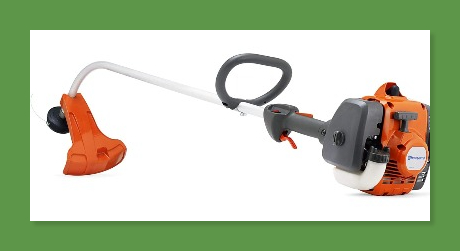
The 122C offers a good balance of power and user-friendly features with its 22-cc, 2-cycle engine and 17-inch cutting width. The curved shaft design makes this trimmer particularly appealing to users who prefer traditional trimmer ergonomics.
Curved Shaft Benefits This curved shaft design weighs 10.5 lbs and uses dual .080-inch cutting lines. The curved configuration brings the cutting head closer to your natural working position, reducing back strain during extended use. This design works exceptionally well for users under 5’8″ tall who find straight-shaft trimmers awkward to maneuver.
Starting System Like its straight-shaft sibling, the 122C features Smart Start technology that makes cold starting nearly effortless. The primer bulb purges air from the fuel system, while the choke provides proper fuel mixture for reliable ignition. Most users report consistent first or second-pull starting after the initial break-in period.
Cutting Performance The Tap N’ Go trimmer head advances line automatically when bumped against the ground. The cutting system handles thick grass and light brush effectively, though it struggles with woody stems thicker than pencil diameter. Line loading takes about three minutes following the illustrated instructions.
Vibration Control Anti-vibration springs isolate the engine from the handles, significantly reducing operator fatigue. Hand tingling and arm numbness – common complaints with budget trimmers – are virtually eliminated during normal use sessions.
Durability Considerations The curved drive shaft uses a flexible cable rather than the solid steel shaft found in straight-shaft models. While this saves weight and reduces manufacturing costs, it’s potentially a long-term wear point under heavy use conditions.
Pros:
- Curved shaft reduces back strain for shorter users
- Smart Start technology for easy starting
- Effective anti-vibration system
- Lightweight at 10.5 pounds
- Husqvarna reliability and support
Cons:
- Flexible drive cable may wear over time
- Less suitable for commercial applications
- Curved shaft limits attachments options
4. 5-in-1 Weed Wacker Gas Powered – 52CC 2-Stroke String Trimmer (RL1739 Pro)
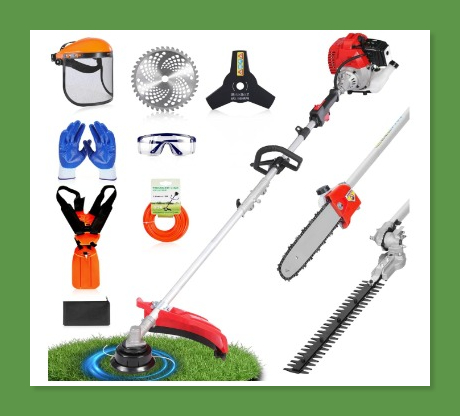
This multi-tool system transforms a single powerhead into five different yard maintenance tools. The RL1739 Pro targets serious homeowners and semi-professional users who want maximum versatility from their equipment investment.
Powerhead Performance The 52cc 2-stroke engine provides ample power for all included attachments. Throttle response is immediate and linear, giving operators precise control over cutting speed. The engine maintains consistent power output even when switching between light trimming and heavy brush cutting tasks.
Complete Tool System The five included attachments cover most yard maintenance needs: string trimmer head, brush cutting blade, hedge trimmer bar, pole saw extension, and edging guard. Each attachment connects via a quick-coupling system that requires no tools and takes less than 30 seconds to change.
Hedge Trimmer Capability The hedge trimmer attachment features dual-action blades with 24-inch cutting length. Blade action is smooth and efficient on branches up to 3/4 inch diameter. The trimmer handles both shaping cuts and rejuvenation pruning effectively.
Pole Saw Performance The pole saw extension reaches up to 12 feet total length, making it ideal for pruning overhead branches without ladder use. The 10-inch bar and chain handle limbs up to 8 inches diameter. Chain tensioning is tool-free using the side-mounted adjustment knob.
Storage and Portability All attachments store in the included carrying case, keeping everything organized and protected. The modular design saves significant storage space compared to owning five separate tools. Total weight varies from 12 to 18 pounds depending on the attachment in use.
Learning Curve Operating five different attachments safely requires familiarization with each tool’s specific techniques and limitations. The instruction manual provides basic guidance, but users benefit from researching proper pruning and trimming methods.
Pros:
- Five tools for the price of one
- Powerful 52cc engine handles all attachments
- Quick-change coupling system
- Included storage case
- Significant cost savings versus individual tools
Cons:
- Heavier than single-purpose trimmers
- Learning curve for multiple attachments
- Generic brand with limited warranty support
5. COOCHEER 58CC 2-Stroke Weed Eater Gas Powered 4-in-1 Brush Cutter
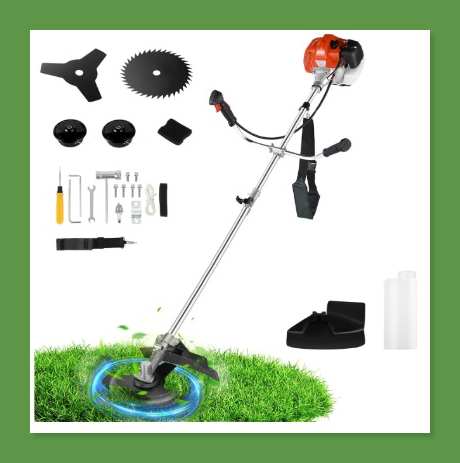
The COOCHEER 58CC model tops our power ratings with its large-displacement engine and aggressive cutting capability. This trimmer targets users who regularly encounter heavy brush, thick weeds, and challenging terrain conditions.
Maximum Power Output The 58cc 2-stroke engine generates significantly more torque than smaller displacement competitors. This extra power becomes apparent when cutting through thick, fibrous weeds that bog down lesser trimmers. The engine maintains cutting speed even in demanding conditions.
4-in-1 Attachment System Four different cutting heads handle various applications: string trimmer for grass, 3-tooth brush blade for woody stems, 40-tooth saw blade for thick brush, and 80-tooth fine cutting blade for dense vegetation. The quick-release coupling system allows rapid attachment changes.
18-Inch Straight Shaft Design The straight shaft provides excellent reach and leverage for cutting operations. Overall length accommodates users from 5’6″ to 6’4″ without requiring awkward postures. The solid steel drive shaft transfers maximum power to the cutting head without energy loss.
Heavy-Duty Construction All components are built for durability and extended service life. The crankcase uses die-cast aluminum rather than plastic housing found on budget models. The clutch system engages smoothly and withstands repeated heavy-load cycling.
Fuel Consumption The large engine consumes more fuel than smaller displacement models, providing approximately 35-40 minutes of runtime per tank. However, the increased cutting efficiency often results in faster job completion, offsetting the higher fuel consumption.
Weight Considerations At 15 pounds dry weight, this trimmer is heavier than most residential models. The included shoulder harness becomes essential for comfortable operation during extended sessions. The weight balance is good once properly adjusted.
Pros:
- Most powerful engine in our test group
- Handles the toughest cutting conditions
- Four different cutting attachments included
- Heavy-duty construction throughout
- Excellent cutting efficiency
Cons:
- Heavy weight requires shoulder harness
- Higher fuel consumption
- More expensive than basic trimmers
- Potentially excessive for light yard work
Buying Guide: Key Factors to Consider
Engine Size and Power Output
Engine displacement directly correlates with cutting power and ability to handle tough conditions. Smaller 22-28cc engines work well for typical grass trimming and light weed control. Medium displacement 35-45cc engines balance power with weight for most homeowners. Large 50-60cc engines provide maximum cutting capability for challenging terrain and commercial applications.
Consider your typical cutting conditions when evaluating engine size. Properties with mostly maintained grass areas require less power than locations with thick weeds, brush, or overgrown areas requiring regular maintenance.
Shaft Design: Straight vs Curved
Straight shaft trimmers offer better reach, improved balance, and compatibility with multiple attachments. The solid steel drive shaft transfers power efficiently and withstands heavy use. Straight shafts work best for users over 5’8″ tall and commercial applications.
Curved shaft trimmers position the cutting head closer to the operator’s natural working stance. They typically weigh less and cost less than straight shaft equivalents. The flexible drive cable limits attachment options and may require eventual replacement. Curved designs suit shorter operators and light-duty applications.
Starting Systems and User-Friendliness
Modern 2-stroke trimmers incorporate various starting aids to reduce pull effort and improve reliability. Primer bulbs purge air from the fuel system for easier cold starts. Spring-assisted recoil systems reduce the force needed for starting pulls. Some models include electric starting systems that eliminate pull-starting entirely.
Easy starting becomes increasingly important as equipment ages and users become less physically capable of repeated hard pulling. Models with proven starting systems save frustration and ensure reliable operation.
Cutting Head Options and Line Loading
Different cutting head designs affect both performance and convenience. Bump-feed heads advance line when tapped against the ground during operation. Fixed-line heads require stopping and manually advancing line as it wears. Automatic feed heads sense line length and advance replacement line without user intervention.
Consider how frequently you’ll need to reload trimmer line based on your property size and cutting frequency. Complex head designs may offer convenience but can be more difficult to service and repair.
Anti-Vibration Features
Prolonged exposure to vibration causes hand tingling, reduced dexterity, and potential long-term health issues. Quality trimmers incorporate anti-vibration systems using springs, dampeners, or isolation mounts between the engine and handles.
Test trimmer vibration levels during actual cutting operations rather than just at idle. Some units develop significant vibration under load despite smooth idle operation.
Weight Distribution and Balance
Proper weight distribution reduces operator fatigue and improves cutting precision. Well-balanced trimmers feel lighter than their actual weight and require less effort to maneuver. Poor balance causes the cutting head to drift during operation, making precise work difficult.
The shoulder harness design significantly affects comfort during extended use. Wide, padded straps distribute weight better than narrow straps that dig into shoulders. Quick-release mechanisms allow rapid removal in emergency situations.
Fuel Efficiency and Tank Capacity
Fuel efficiency affects both operating costs and productivity. Efficient engines provide longer runtime between refueling stops, reducing interruptions during large jobs. Tank capacity determines maximum continuous runtime but also affects overall weight when full.
Consider the balance between tank size and weight for your typical use patterns. Large tanks benefit commercial users who work all day, while homeowners might prefer lighter units with smaller tanks.
Warranty Coverage and Parts Availability
Warranty terms vary significantly between manufacturers and can indicate company confidence in their products. Longer warranties typically correlate with better build quality and reliability. However, warranty coverage means little without accessible service networks and parts availability.
Research local dealer support before purchasing, especially for lesser-known brands. Quality trimmers should provide at least two seasons of trouble-free operation with proper maintenance.
Maintenance Tips for 2-Stroke Weed Eaters
Fuel System Care
Always use fresh gasoline mixed with high-quality 2-stroke oil at the manufacturer’s specified ratio. Most modern 2-stroke engines require 50:1 mixing ratios, but verify this in your owner’s manual. Pre-mixed fuel eliminates mixing errors and provides consistent performance.
Drain fuel tanks and run engines dry before storage periods longer than 30 days. Stale fuel causes starting problems and can damage fuel system components. Add fuel stabilizer if extended storage with fuel is necessary.
Air Filter Maintenance
Clean foam air filters weekly during heavy use periods or monthly during normal use. Wash foam elements in warm soapy water, rinse thoroughly, and allow complete drying before reinstalling. Apply a light coating of clean motor oil to foam filters before installation.
Paper air filter elements require replacement rather than cleaning. Inspect paper filters regularly and replace when they appear dirty or damaged. Never operate trimmers without air filters installed.
Spark Plug Service
Replace spark plugs annually or after every 100 hours of operation. Use the exact plug type specified in the owner’s manual to ensure proper heat range and thread pitch. Gap new plugs to specification using a feeler gauge before installation.
Examine old plugs for signs of engine problems. Normal plugs show light brown electrode deposits. Black, sooty deposits indicate rich fuel mixture or poor air filtration. White deposits suggest lean mixture or overheating conditions.
Cutting Line and Head Maintenance
Keep spare cutting line in stock to avoid work interruptions. Use only the line diameter specified for your trimmer head – heavier line overloads the engine while lighter line breaks frequently. Quality line provides better cutting performance and longer service life.
Clean grass and debris from cutting heads after each use session. Accumulated material can prevent proper line advancement and cause head imbalance. Lubricate head mechanisms annually with marine-grade grease.
Storage Procedures
Clean external surfaces thoroughly before storage to prevent corrosion and pest damage. Remove accumulated grass clippings from cooling fins and air intake screens. Store trimmers in dry locations away from temperature extremes.
Position stored trimmers to prevent fuel or oil leakage onto concrete floors. Hang units vertically or support them on protective mats. Cover stored equipment to prevent dust accumulation and pest intrusion.
Common Problems and Solutions
Hard Starting Issues
Hard starting typically results from stale fuel, dirty air filters, or fouled spark plugs. Begin troubleshooting by draining old fuel and refilling with fresh gas/oil mixture. Clean or replace the air filter and install a new spark plug gapped to specification.
Check that the choke operates properly and fully closes during cold starts. Verify that the primer bulb fills with fuel when pressed and doesn’t leak down immediately. Ensure the stop switch functions correctly and hasn’t failed in the off position.
Poor Cutting Performance
Dull or damaged cutting line reduces trimming efficiency and increases engine load. Replace worn line with fresh material of the correct diameter. Verify that line extends the proper distance from the cutting head – too short reduces cutting ability while too long overloads the engine.
Inspect the cutting head for damage or excessive wear. Bent or cracked heads cause vibration and poor cutting. Clean accumulated debris from head mechanisms that might prevent proper line advancement.
Excessive Vibration
Vibration problems often stem from damaged or improperly installed cutting heads. Ensure all components are tight and properly aligned. Replace damaged heads or bent cutting attachments immediately.
Check engine mounting bolts for tightness and inspect anti-vibration components for wear or damage. Loose engine mounts amplify normal vibration into uncomfortable levels. Replace worn vibration dampeners promptly.
Engine Performance Issues
Poor acceleration, rough idle, or loss of power typically indicate fuel system problems. Clean or replace the fuel filter if equipped, and inspect fuel lines for cracks or blockages. Carburetor adjustment may be necessary after extended use or when switching fuel types.
Verify that the exhaust system isn’t blocked with carbon deposits or debris. Remove the muffler and inspect the exhaust port for restrictions. Clean carbon buildup using appropriate solvents and tools.
Safety Considerations
Personal Protective Equipment
Always wear safety glasses or a face shield when operating string trimmers. Flying debris can cause serious eye injuries even from seemingly minor cutting operations. Long pants and closed-toe shoes protect legs and feet from cuts and flying objects.
Hearing protection becomes important during extended use sessions. Most gas-powered trimmers generate noise levels that can cause hearing damage with prolonged exposure. Use ear plugs or protective headphones rated for power equipment noise levels.
Operational Safety Practices
Inspect the work area for rocks, wire, or other hard objects before beginning trimming operations. These items can become dangerous projectiles when struck by cutting line or blades. Remove or mark obstacles that can’t be cleared from the cutting area.
Maintain awareness of bystanders, especially children and pets, during trimming operations. Establish a safety perimeter of at least 50 feet around cutting operations. Never operate trimmers when others are within the potential debris field.
Equipment Safety Checks
Inspect cutting heads and guards before each use session. Damaged or missing guards expose operators to contact with spinning cutters. Replace damaged components immediately rather than attempting temporary repairs.
Verify that all handles and controls function properly before starting the engine. Loose handles or malfunctioning throttles can cause loss of control during operation. Test the stop switch to ensure it shuts down the engine immediately.
Environmental Impact and Fuel Considerations
Emission Reduction Strategies
Modern 2-stroke engines produce fewer emissions than older designs, but they still generate more pollution per hour than 4-stroke alternatives. Use high-quality 2-stroke oil designed for air-cooled engines to minimize exhaust emissions and reduce environmental impact.
Proper fuel mixing ratios optimize combustion efficiency and reduce harmful emissions. Too much oil creates excessive smoke and carbon deposits, while insufficient oil causes engine damage. Follow manufacturer specifications exactly for best results.
Fuel Storage and Handling
Store gasoline in approved containers designed for flammable liquids. Keep fuel supplies in cool, dry locations away from ignition sources and living areas. Label containers with contents and mixing dates to prevent confusion and ensure freshness.
Dispose of old fuel and oil properly through hazardous waste collection programs. Never dump petroleum products down drains or onto soil where they can contaminate groundwater. Many auto parts stores accept used motor oil for recycling.
Conclusion and Final Recommendations
The best 2-stroke weed eater depends on your specific needs, property size, and intended use patterns. For most homeowners, the Husqvarna 122LK offers the ideal combination of reliability, performance, and support network. Its proven 22cc engine provides adequate power for typical yard maintenance while maintaining reasonable weight and fuel consumption.
Users requiring maximum versatility should consider the 5-in-1 Weed Wacker Gas Powered (RL1739 Pro) for its comprehensive attachment system that replaces multiple individual tools. This option provides excellent value for properties requiring diverse cutting tasks throughout the season.
The COOCHEER 58CC model dominates when raw cutting power takes priority over weight considerations. Its large-displacement engine handles the most challenging conditions that overwhelm smaller trimmers, making it ideal for rural properties or commercial applications.
Budget-conscious buyers will appreciate the 52cc 2-Stroke 3-in-1 Gas Brush Cutter for its combination of power, versatility, and value pricing. While lacking the refinement of premium brands, it delivers solid performance for occasional use applications.
Finally, the Husqvarna 122C serves users who prefer curved shaft ergonomics and don’t require attachment versatility. Its lightweight design and easy starting system make it particularly suitable for older operators or those with limited physical strength.
Remember that proper maintenance extends equipment life and ensures reliable operation. Invest in quality 2-stroke oil, maintain clean air filters, and use fresh fuel to maximize your trimmer’s performance and longevity. With proper care, any of these 2-stroke weed eaters will provide multiple seasons of dependable service.
Take time to evaluate your specific needs, test different models when possible, and consider local dealer support when making your final decision. The right 2-stroke weed eater will make yard maintenance more efficient and enjoyable while delivering professional-quality results that enhance your property’s appearance.

